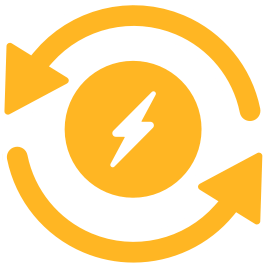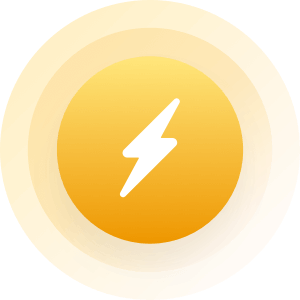| Topic: Well what is it? All of the brain or only little? | |
|---|---|
|
Edited by
smiless
on
Mon 06/01/09 07:29 AM
|
|
|
Last time I answered a question like this I got accused of being too technical. LOL You don't really want an extended post on "neural net processing capability of human brain tissue" do you? 
I wouldn't mind if you can put it in easy sentences for me: I might get lucky and understand half of what you are saying. laugh: 
IMO, from what I have observed in life, people's ability to learn and think is about 50% heredity and about 50% genetics. Some people learn easily, some don't. The brain learns by sending out little (I am going to try to use few technical terms here) 'wires' to other brain cells. These patterns of connections hardwire memories into our brains. Since each cell can sent out lots of little wires, the capacity of the brain can multiply easily (world's greatest oversimplification). In order to make the brain cell actually do this you have to actually work the brain cell by making it think. We use our brains all the time but we do not necessarily make the brain work hard enough to develop it's potential. The human brain is akin to a potential world class sprinter living on an island twenty feet square who never develops the speed possible because the fastest he can run is limited by the size of his enviroment. Okay I am starting to understand this. So these wires actually travel around in the brain at various times, but one has to hone these wires or understand how they work before sending out such signals in the first place. With that being said it is not a natural process at all. It is something one has to learn through many years of practice by just studying or practicing let us say. I think the scientific community understands how the brain functions. There surely are alot of articles about it. I believe technology really helps out also, yet let us take it up a step and ask why can't technology or scientists discover how mind reading works? Why hasn't the scientific community actually confirm that mind reading is a valid theory? Or have they? Is it that the majority of the people don't believe in such things because it is not a common practice? I mean these wires hold information that actually travel to one part of the brain to another yet can they travel from one brain to another brain? If so then how exactly has this been shown to happen. Is it recorded? Can we see it happen? I mean yes one person can ask, " What am I thinking?" and the other might have a chance of getting it right, but wouldn't that be a guess neverthless or a good judgement of the person. Have scientists seen these wires travel from one brain to another? I think one has to fully understand how the brain works, how much of it we use, what parts are used for different activities, before we can actually tamper with the possiblities of mind reading or telepathy. Would this have any merit on what I mention just now? |
|
|
|
|
|
Edited by
Bushidobillyclub
on
Mon 06/01/09 07:44 AM
|
|
|
http://www.sciencedaily.com/releases/2008/12/081202115201.htm
Why We Remember Important Things And Forget Trivia: Neuron's Synapses Remodel Themselves ScienceDaily (Dec. 3, 2008) — Where would we be without our ability to remember important information or, for that matter, to forget irrelevant details? Thanks to the flexibility of the nerve cell's communication units, called synapses, we are good at both. Up to now, only the receiving side of a synapse was believed to play an active role in this reorganization of the brain, which is thought to underlie our ability to learn but also to forget. An incorrect assumption, as scientists at the Max Planck Institute of Neurobiology in Martinsried could now show. In the scientific journal Neuron, they report that the neurotransmitter-releasing part of a synapse dramatically remodels itself in response to electrical stimulation. It may thus make a decisive contribution to the adaptability of the brain to ever-changing environments. Communication is the be-all and end-all of the brain. Every one of the hundred billion nerve cells that comprise our brain is a master of data exchange, with contacts to thousands of neighbouring cells. At these points of contact, known as synapses, the neuronal information flows along a one-way channel; from the upstream cell to the downstream cell. The brain can deal with its complicated tasks only when the nerve cells manage to exchange information at the right time and place via their synapses. It therefore comes as no surprise that one of the most outstanding attributes of the brain is its great adaptability. This is due to the versatility of the synapses, which, depending on whether they are required or not, can proliferate or are pruned accordingly. Most scientists are of the opinion that this flexible exchange of information is what makes learning and memory possible in the first place. The two sides of information transmission The receiver side of the points of contact, the spines, plays an active role in the assembly and break-down of new synapses. The more information to be processed, the more receiver stations the nerve cell will set up. New spines grow towards neighbouring cells to form new synapses. If the flow of information weakens, the synapses disappear and the spines can regress. By comparison, the other side of the synapse, the transmitter unit, also known as bouton, was believed to play only a passive role in the formation of synapses. However, this presumption turned out to be false, as scientists at the Max Planck Institute of Neurobiology have now shown. They are the first to successfully observe both the receiver side and the transmitter terminal of a synapse over an extended period of time. This involved tagging a number of nerve cells with a red fluorescent dye and labelling the connected cells in green. Using a high-resolution two-photon microscope, changes on both sides could be observed in time-lapse sequences. It soon became clear that the transmitter unit of a synapse played a considerably more active role in the assembly and disintegration of the synapse than hitherto assumed. Once the flow of information to be passed on by a cell is reduced, many of the meanwhile superfluous transmitter stations are broken down. Furthermore, since this novel experimental approach enabled them to watch the contacts between boutons and spines breaking down directly under the microscope, the scientists were able to verify that the reduction in the number of spines does, in fact, result in the loss of synapses. The brain's reorganization is unexpectedly complex "What is particularly exciting is that, all in all, the number of transmitter terminals remains constant", project leader Valentin Nägerl explains. While the number of synapses is reduced when the flow of information weakens, new transmitter terminals emerge elsewhere in a seemingly balanced fashion. Since only those cells that originally communicated with each other were tagged, the scientists do not know whether the new transmitters pass the information on to nerve cells that were hitherto not involved in the communication. "Perhaps the cells form new synapses to inhibitory nerve cells, which would reduce the transmission of synaptic information even more", Nadine Becker speculates on her results. The scientists now aim to investigate precisely this possibility by also visualizing synapses formed with inhibitory neurons. One thing is for certain: The processing of information is not exclusive to the receiver cell. The transmitter cell reacts actively to the situation at hand and therefore plays an important role in our ability to learn and remember things. Journal reference: 1. Nadine Becker, Corette Wierenga, Rosalina Fonseca, Tobias Bonhoeffer, U. Valentin Nägerl. LTD induction causes morphological changes in presynaptic boutons and reduces their contacts with spines. Neuron, November 26, 2008 Adapted from materials provided by Max-Planck-Gesellschaft. What I find most interesting is that even after an activity has gone long without use and the synapse related to that skill have gone away, the receiving terminals stay right where they are, ready for future use . . . . prepared to rebuild the synapse . . . Its like riding a bike . . . . |
|
|
|
|
|
Research Report
Dormancy of the Human Brain Dormant Brain Research and Development Laboratory T.D.A. Lingo, Director The human brain is only 10% functional, at best. The first to outline this theory, later proved a fact by others, was Australian Neurology Nobel Laureate Sir John Eccles. (Lecture: University of Colorado, University Memorial Center Boulder, July 31, 1974.) "The brain indicates its powers are endless." In England, John Lorber did autopsies on hydrocephalics. This illness causes all but the 1/6th inch layer of brain tissue to be dissolved by acidic spinal fluid. He tested the IQ's of patients before and during the disease. His findings showed that IQ remained constant up to death. Although over 90% of brain tissue was destroyed by the disease, it had no impact on what we consider to be normal intelligence. Russian neurosurgeon Alexandre Luria proved that the 1/3 bulk of frontal lobes are mostly dormant. He did this by performing ablation experiments on persons. He gave physiological and psychological tests before, cut out parts and whole frontal lobes, the re-tested after. His conclusion: removal of part or all of frontal lobes causes no major change in brain function, (some change in mood alteration). The frontal lobes are mostly dormant, asleep. (Luria, A.R. "Frontal Lobes and the Regulation of Behavior." In: K.H. Pribram and A.R. Luria, Editors, Psychophysiology of the Frontal Lobes. New York, and London, Academic Press, 1973) Finally, the human brain contains 10 billion neurons, mostly in the outer layer of brain cortex. the function of these currently dominant cells is fairly clear. but the brain also contains 120 billion glial cells. Aside from some secondary nurturing of neurons, the primary function of the glia is not clear. What big bang mirical awaits mankind within these mysteries? Today, most would agree without argument that the potential of the human brain is infinite. Thus, to state that a person uses 10%, 5%, or even 1% of their potential brain capacity (infinity) is overly generous. The point is this: There is no dispute among honestly rational experts about the latent potential of the human think box. There is only friendly dispute about how much and what still awaits us, patiently to be self-discovered between each set of ears. Hence, the wisdom of intuitive folksay was correct: "The human brain is only 10% functional." John Eccles thinks that number is too high. "How can you calculate a percentage of infinity?" http://www.neilslade.com/Papers/how.html |
|
|
|
|
|
I concur
We actually do use our brain - just like every other organ. I believe it's about "how" (visceral processes vs cognative processes.) I recently read somewhere that the issue is about using 10% of your brain vs. using 10% of your brain POTENTIAL. Now, THAT makes more sense! |
|
|
|
|
|
Oh gosh now we are back at 10%?
So we are not using 100% afterall? Well what is it? 
|
|
|
|
|
|
Oh gosh now we are back at 10%? So we are not using 100% afterall? Well what is it? 
I'll repeat myself. We use our brains all the time but we do not necessarily make the brain work hard enough to develop it's potential. The actual potential is almost unlimited. Watching 'I love Lucy' will not be the path to a Nobel Prize. |
|
|
|
|
|
Edited by
Bushidobillyclub
on
Mon 06/01/09 11:29 AM
|
|
|
Research Report Dormancy of the Human Brain Dormant Brain Research and Development Laboratory T.D.A. Lingo, Director The human brain is only 10% functional, at best. The first to outline this theory, later proved a fact by others, was Australian Neurology Nobel Laureate Sir John Eccles. (Lecture: University of Colorado, University Memorial Center Boulder, July 31, 1974.) "The brain indicates its powers are endless." In England, John Lorber did autopsies on hydrocephalics. This illness causes all but the 1/6th inch layer of brain tissue to be dissolved by acidic spinal fluid. He tested the IQ's of patients before and during the disease. His findings showed that IQ remained constant up to death. Although over 90% of brain tissue was destroyed by the disease, it had no impact on what we consider to be normal intelligence. Russian neurosurgeon Alexandre Luria proved that the 1/3 bulk of frontal lobes are mostly dormant. He did this by performing ablation experiments on persons. He gave physiological and psychological tests before, cut out parts and whole frontal lobes, the re-tested after. His conclusion: removal of part or all of frontal lobes causes no major change in brain function, (some change in mood alteration). The frontal lobes are mostly dormant, asleep. (Luria, A.R. "Frontal Lobes and the Regulation of Behavior." In: K.H. Pribram and A.R. Luria, Editors, Psychophysiology of the Frontal Lobes. New York, and London, Academic Press, 1973) Finally, the human brain contains 10 billion neurons, mostly in the outer layer of brain cortex. the function of these currently dominant cells is fairly clear. but the brain also contains 120 billion glial cells. Aside from some secondary nurturing of neurons, the primary function of the glia is not clear. What big bang mirical awaits mankind within these mysteries? Today, most would agree without argument that the potential of the human brain is infinite. Thus, to state that a person uses 10%, 5%, or even 1% of their potential brain capacity (infinity) is overly generous. The point is this: There is no dispute among honestly rational experts about the latent potential of the human think box. There is only friendly dispute about how much and what still awaits us, patiently to be self-discovered between each set of ears. Hence, the wisdom of intuitive folksay was correct: "The human brain is only 10% functional." John Eccles thinks that number is too high. "How can you calculate a percentage of infinity?" http://www.neilslade.com/Papers/how.html Thanks for the laugh. Poor research = bad conclusions. Old research = old conclusions. _______________________________ About Glia cells read the article I presented, it shows some interesting research into these cells that make up 90% of the brain matter in our heads. |
|
|
|
|
|
10% is just a myth, if you can read this then you are using more than 10% of your brain.
I Cdnuolt Blveiee Taht I Cluod Aulaclty Uesdnatnrd Waht I Was Rdanieg. The Phaonmneal Pweor Of The Hmuan Mnid, Aoccdrnig To A Rscheearch At Cmabrigde Uinervtisy, It Deosn’t Mttaer In Waht Oredr The Ltteers In A Wrod Are, The Olny Iprmoatnt Tihng Is Taht The Frist And Lsat Ltteer Be In The Rghit Pclae. The Rset Can Be A Taotl Mses And You Can Sitll Raed It Wouthit A Porbelm. Tihs Is Bcuseae The Huamn Mnid Deos Not Raed Ervey Lteter By Istlef, But The Wrod As A Wlohe. |
|
|
|
|
|
Research Report Dormancy of the Human Brain Dormant Brain Research and Development Laboratory T.D.A. Lingo, Director The human brain is only 10% functional, at best. The first to outline this theory, later proved a fact by others, was Australian Neurology Nobel Laureate Sir John Eccles. (Lecture: University of Colorado, University Memorial Center Boulder, July 31, 1974.) "The brain indicates its powers are endless." In England, John Lorber did autopsies on hydrocephalics. This illness causes all but the 1/6th inch layer of brain tissue to be dissolved by acidic spinal fluid. He tested the IQ's of patients before and during the disease. His findings showed that IQ remained constant up to death. Although over 90% of brain tissue was destroyed by the disease, it had no impact on what we consider to be normal intelligence. Russian neurosurgeon Alexandre Luria proved that the 1/3 bulk of frontal lobes are mostly dormant. He did this by performing ablation experiments on persons. He gave physiological and psychological tests before, cut out parts and whole frontal lobes, the re-tested after. His conclusion: removal of part or all of frontal lobes causes no major change in brain function, (some change in mood alteration). The frontal lobes are mostly dormant, asleep. (Luria, A.R. "Frontal Lobes and the Regulation of Behavior." In: K.H. Pribram and A.R. Luria, Editors, Psychophysiology of the Frontal Lobes. New York, and London, Academic Press, 1973) Finally, the human brain contains 10 billion neurons, mostly in the outer layer of brain cortex. the function of these currently dominant cells is fairly clear. but the brain also contains 120 billion glial cells. Aside from some secondary nurturing of neurons, the primary function of the glia is not clear. What big bang mirical awaits mankind within these mysteries? Today, most would agree without argument that the potential of the human brain is infinite. Thus, to state that a person uses 10%, 5%, or even 1% of their potential brain capacity (infinity) is overly generous. The point is this: There is no dispute among honestly rational experts about the latent potential of the human think box. There is only friendly dispute about how much and what still awaits us, patiently to be self-discovered between each set of ears. Hence, the wisdom of intuitive folksay was correct: "The human brain is only 10% functional." John Eccles thinks that number is too high. "How can you calculate a percentage of infinity?" http://www.neilslade.com/Papers/how.html Thanks for the laugh. Poor research = bad conclusions. Old research = old conclusions. Here is a link that should explain things better: http://faculty.washington.edu/chudler/tenper.html |
|
|
|
|
|
Edited by
Bushidobillyclub
on
Mon 06/01/09 11:32 AM
|
|
|
Ahh, that is correct. Let me apologize for my haste.

http://faculty.washington.edu/chudler/tenper.html Same link I posted on page one! 
|
|
|
|
|
|
Oh gosh now we are back at 10%? So we are not using 100% afterall? Well what is it? 
POTENTIAL! We don't use our full POTENTIAL! If you look around at 99.9% of human beings (and I include myself in that count) I think the truth of that is pretty obvious. If any of us ever exceeds our capacity to learn, then it will become another discussion. 
|
|
|
|
|
|
Oh gosh now we are back at 10%? So we are not using 100% afterall? Well what is it? 
POTENTIAL! We don't use our full POTENTIAL! If you look around at 99.9% of human beings (and I include myself in that count) I think the truth of that is pretty obvious. If any of us ever exceeds our capacity to learn, then it will become another discussion. 
I bet you dye your hair!!!! |
|
|
|
|
|
Oh gosh now we are back at 10%? So we are not using 100% afterall? Well what is it? 
I'll repeat myself. We use our brains all the time but we do not necessarily make the brain work hard enough to develop it's potential. The actual potential is almost unlimited. Watching 'I love Lucy' will not be the path to a Nobel Prize. So at what percentage are we using it when we for example read a book? or what percentage is it at its highest or lowest? Or is it at 100% all the time when we are awake. |
|
|
|
|
|
Oh gosh now we are back at 10%? So we are not using 100% afterall? Well what is it? 
I'll repeat myself. We use our brains all the time but we do not necessarily make the brain work hard enough to develop it's potential. The actual potential is almost unlimited. Watching 'I love Lucy' will not be the path to a Nobel Prize. So at what percentage are we using it when we for example read a book? or what percentage is it at its highest or lowest? Or is it at 100% all the time when we are awake. It is at it's highest after doing something which causes it to work, which causes increases in memory and reasoning ability. It is at it's lowest after periods of inactivity which allows previously active connections to "go away". |
|
|
|
|
|
The brain is the most complex organ in our body, nobody know's for sure of how much we use our brain. We can use an apparatus for measuring brain activity, but evrybody is different. Many factors are considered when measuring your brain activity such as tumors, and ext. Local MRI is a good way to measure activity in the brain. However keep in mind that their is nothing 100% efficient, if so we would all be geniuses.
|
|
|
|
|
|
Edited by
smiless
on
Mon 06/01/09 07:14 PM
|
|
|
The brain is the most complex organ in our body, nobody know's for sure of how much we use our brain. We can use an apparatus for measuring brain activity, but evrybody is different. Many factors are considered when measuring your brain activity such as tumors, and ext. Local MRI is a good way to measure activity in the brain. However keep in mind that their is nothing 100% efficient, if so we would all be geniuses. Well there you go. We are not quiet sure yet. This means we don't know exactly how much we use. It is still being studied by scientists and perhaps one day we will now about the functions of our brain. Very interesting perspective. I guess it could be a lifetime endeavor if you think about it. One studying the functions of the brain and how exactly it works. I mean there are alot of theories out there already, but I am sure we still have a long ways to go to know more about how it works. Great information you provide us. thank you 
|
|
|
|
|
|
Oh gosh now we are back at 10%? So we are not using 100% afterall? Well what is it? 
I'll repeat myself. We use our brains all the time but we do not necessarily make the brain work hard enough to develop it's potential. The actual potential is almost unlimited. Watching 'I love Lucy' will not be the path to a Nobel Prize. So at what percentage are we using it when we for example read a book? or what percentage is it at its highest or lowest? Or is it at 100% all the time when we are awake. It is at it's highest after doing something which causes it to work, which causes increases in memory and reasoning ability. It is at it's lowest after periods of inactivity which allows previously active connections to "go away". So studying quantam theory or tough formulas would be at its highest and sleeping would be at its lowest. Very interesting and makes alot of sense. Yet one wonders how much of a percentage when at highest and lowest would be interesting? Or is that even possible to calculate? |
|
|
|
|
|
To calculate a percentage we would need to know what 100 percent looked like, and we have never seen it.
Notice, not a single bit is technical jargon was harmed in this thread. |
|
|
|
|
|
Oh gosh now we are back at 10%? So we are not using 100% afterall? Well what is it? 
POTENTIAL! We don't use our full POTENTIAL! If you look around at 99.9% of human beings (and I include myself in that count) I think the truth of that is pretty obvious. If any of us ever exceeds our capacity to learn, then it will become another discussion. 
I bet you dye your hair!!!! Naturally blonde and naturally smart...an amazing combination by any standard! LOL! |
|
|
|
|
|
To calculate a percentage we would need to know what 100 percent looked like, and we have never seen it. Notice, not a single bit is technical jargon was harmed in this thread. And I like it that way. It gives me and perhaps others with average intelligence to feel included in such debates. 
When technical jargons occur, I end up getting a dictionary and trying to figure out what the hell that person is talking about 
So thanks for keeping it simple. I do find it very interesting. I mean there are people who study the brains functions each and everyday for a living. My goodness what a job they have! Hopefully they will discover more about the functions of our brains and how much we actually use of it in various times and efforts. If anything I probably can get lost on the internet with the many research papers about it anyway. A lifetime endeavor at its best. 
|
|
|
|
|









